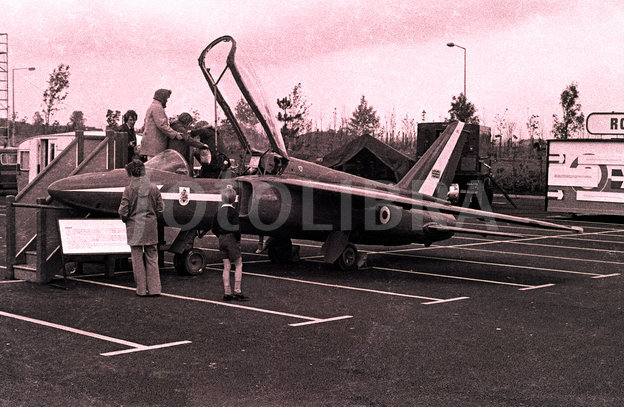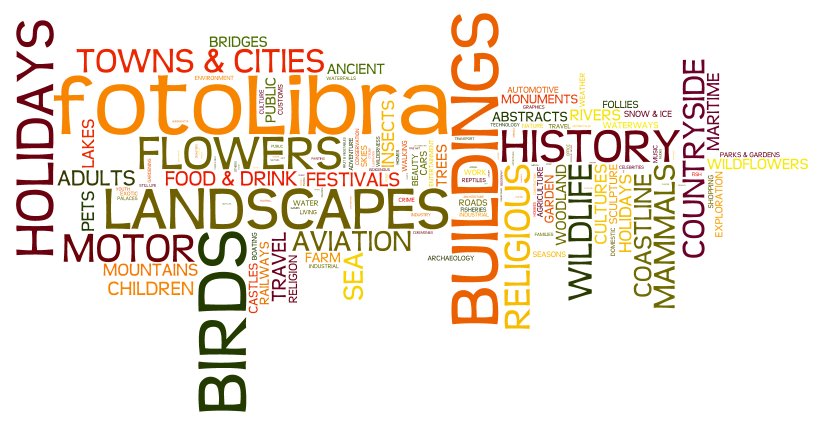Posts Tagged ‘keywords’
fotoLibra’s Most Popular Subjects
November 4th, 2010by Gwyn Headley
Managing Director
Here are the most popular subjects photographed on fotoLibra, ranked by size.
It would be pleasant and profitable for all of us to see many more of the less well featured subjects, such as
Age
Extreme
Invertebrates
Customs
Law and Order
Civilisations
Humour
Military
Engineering
National
Lifestyle
Motherhood
Plants
Antiques
Cartoons
Astronomy
Finance
Cacti
Fitness
Ferns
Physics
Tools
Dance
Transport
Ecology
Heritage
Cycling
Family
Aesthetics
Adventure
Arts
Transport
Running
Books
Chemistry
Horse-drawn
Geology
Toys
Third World
Royalty
Textiles
Glass
Forestry
Amphibians
News
Tennis
Hospitality
Parties
Wine
Ceramics
Camping
Showbiz
Furniture
Indoor
Protest
House
Crafts
Marine
Prehistoric
Folklore
Sub Aqua
Media
American
Computers
Sport
Collecting
Jewellery
Biology
Lichen
Country
Clubs
Disease
Design
Private
Society
Places
Events
Tunnels
Hospitals
Drama
TV
Olympics
Zoology
Manuscripts
Cinema
Botany
Gay & Lesbian
Typography
Gyms
Disability
Science
Health
Archaeology
Maps
Hotels
DIY
Old Age
Entomology
Anatomy
State
Topography
Genetics
Anthropology
Mountains into Molehills
April 1st, 2010by Gwyn Headley
Managing Director
fotoLibra member John Cleare is a world-famous mountain photographer who made his reputation long before fotoLibra was even a gleam in my eye, so we can claim no credit for his fame, alas. Indeed, I handled the publicity for one of his mountain books back in 1979, so he knows whereof he writes (and shoots).

Brocken Spectre, Lochnagar ©John Cleare / fotoLibra
–
He sent me an email yesterday, lamenting the decline in standards of captioning, and I agree with every word.
I’ll share with you my indignation at the use, all too frequent these days, of wrongly captioned pictures by the media. It’s my current pet gripe, and I could recount a series of ghastly gaffs that I’ve noticed since digitisation became the norm.
Only the other day the Daily Telegraph ran a major travel feature on skiing at Lake Louise in the Canadian Rockies, illustrated by a (very nice) picture of Moraine Lake, which of course is somewhere else and is well known and easily recognisable to boot. Naturally I take note of the many pictures of Everest that I come across in the media — from the Times, to the BBC, to my wife’s magazines. Some 30% or more are not Mount Everest, yet are captioned as such. Colleagues tell me such happenings are all too frequently seen in their own fields too.
Is it that the photographer doesn’t caption the material properly ? Is it that Mr Getty doesn’t care ? Is it that the Picture Editor doesn’t care ?
I can’t see it happening with the fotoLibra system !
I’ve moaned about the matter to BAPLA many times over recent years but of course they can do little about it except to encourage “TRUTH”.
At the risk of blotting my copybook, I’ve moaned to guilty (?) picture editors and researchers in several really blatant cases. Even when we’ve known each other by name, in only one case has there ever been a response — and that was claiming the caption supplied was incorrect.
It may well have been true, but it’s as good excuse as any.
Thanks to digitisation, the whole picture industry has changed so much in recent years that the days of the small, specialist independent are in the past, perhaps fortuitously at a time when folk seem surprised that I’ve not retired long since. But of course like mountaineering, making pictures is a way of life from which one can never retire — I’ve done five books in the past eighteen months and led one excellent small expedition, although I suppose I shall gradually fade away in due course.
I do like the fotoLibra system, and for someone busy like myself, responding to specific picture calls is a convenient way to operate, besides airing pictures that no one would ask me for in the normal way, given my specialist reputation.
John has hit the nail on the head. There is a lot of sloppy work out there, and I don’t know whether it’s because people are too busy, overworked, stressed, tired, drugged, drunk or because they simply don’t care. Forty years ago if you did something wrong you got sacked. That can’t happen now.
And thank you John for your very kind comments about fotoLibra but the unpalatable truth is that it could occasionally happen. I don’t think many of our staff could readily distinguish between Moraine Lake and Lake Louise, so we have to rely on the accuracy of our members. We’ll correct errors where we’re sure we’re right (the Eiffel Tower is not white, circular and leaning), and thanks to the brilliant Colin Smedley our aviation photographic captions are the most accurate in the picture library world — but in the end we have to rely on the photographer.
Let’s work together to turn this picture captioning mountain into a molehill. For our part, it’s down to us to ensure the captions and keywords we give to our images are as precise and as accurate as possible. After they’re sold, publication is out of our hands — we can’t afford to go to the printers and stand over the Heidelbergs — but if the final image appears wrongly captioned or attributed, we can and always do make our displeasure strongly known to the buyer.
Don’t mess with fotoLibra members’ photographs!



